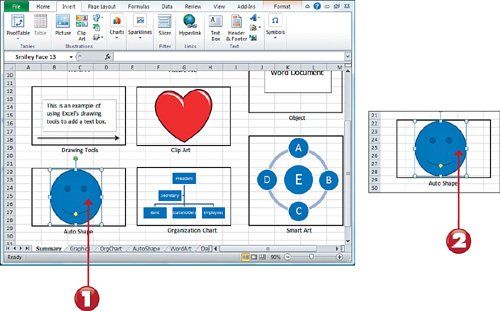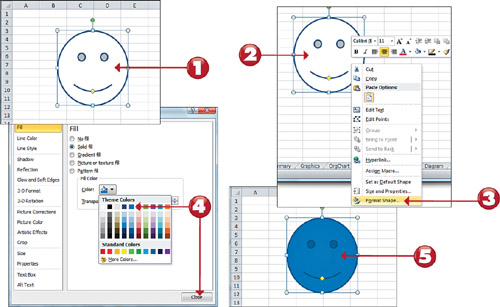Selecting an Object
As
you have seen, you can add charts to a worksheet, draw objects, insert
pictures, and more. Each of these items exists on a separate layer on
top of the worksheet and is generically called an object. As you
discover in the next several tasks, you can format, move, resize, and
delete objects; first, however, you must select the object you want to
modify.

1. Click the object you want to select; selection handles appear around the edges of the object.
2. Move the mouse over the object border; the pointer becomes a
four-headed arrow and you can move it; a two-headed arrow enables you
to resize it.
Note: Selecting Multiple Objects
To select multiple objects,
click the first object, press and hold down the Shift key, and click
the second object. Continue until you select all the objects you want. |
Formatting an Object
You
can format objects just as easily as you format text, data, and
worksheets. Depending on the object, the standard formatting options
you can change are as follows: font (text changes in the object),
alignment (where text aligns in the object), colors and lines (whether
lines are filled, colored, or have arrows), size (the height, width,
and scale of the object), protection (whether others can alter your
object), properties (how you position the object and whether you can
print it), and Web (text to display while the object loads online).

1. Click the object you want to format; selection handles appear around the edges of the object.
2. Right-click the object.
3. Select Format [object name] (here, Shape) from the shortcut menu.
4. A Format [object name] dialog box opens. Click the available tabs, alter the formatting options as needed, and click Close.
5. The formatting changes are applied to the object.
Note: Double-Click to the Format Dialog Box
You can also double-click directly on the object to automatically open the Format dialog box associated with it. |